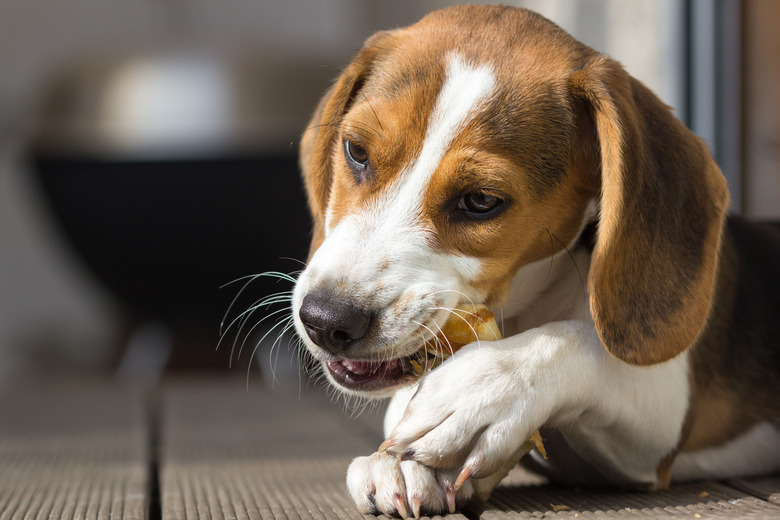Are Bully Sticks Safe For Puppies?
Is your puppy chewing on absolutely everything in sight? An active, playful puppy will naturally look to satisfy his urge to chew, especially when he's teething. If you're trying out a variety of treats and toys to find the option that's right for your puppy, you may come across bully sticks. These popular chews are a favorite of many dogs (and their owners), but are they safe for puppies?
All about bully sticks
All about bully sticks
First, let's take a look at just what bully sticks are. Bully sticks have become the go-to chew for dogs. They're viewed as a safer, more nutritious alternative to some other chew products, including rawhide. According to The Canine Journal, bully sticks are made from bull penises, which are 100 percent beef tendon. You can even stuff bully sticks into interactive toys to help keep your puppy's attention.
Pawstruck Press explains that to make bully sticks, the bull penis is cleaned, hung, and dried. Then, it is slow-roasted. Because the bully sticks are made of a single ingredient, you don't have to worry about additives or other potentially harmful ingredients.
Pros of bully sticks
Pros of bully sticks
Because bully sticks are all-natural, they are a popular choice for nutrition-conscious dog owners. They are softer than rawhide, so they're less likely to cause your dog to choke. According to Pawstruck Press, bully sticks also won't cause blockages in your dog's stomach, which is another risk of rawhide chews. Instead, bully sticks are completely digestible, so there's no concern about large pieces passing into your dog's digestive tract and causing trouble.
Bully sticks tend to last much longer than other chews, meaning you get more bang for your buck.
Remember that bully sticks come in a variety of sizes and designs, so it's important to choose a stick that's right for your dog. Puppies will often find smaller, thinner bully sticks easier to handle, but as your dog grows, you may need to upgrade the size of the bully stick to better suit your dog's chewing style.
Even though bully sticks are regarded as being pretty safe, you still shouldn't leave your puppy alone with the chew toy. Always stay nearby to supervise your puppy.
Potential risks
Potential risks
Keep in mind that no treat is 100 percent safe for every dog. Bully sticks are relatively safe, but they do carry a few risks that you need to be aware of, too.
According to Preventative Vet, bully sticks can contain a lot of calories, so it's important to limit the number of these treats that you give to your puppy. The majority of your puppy's diet should come from nutritionally balanced puppy food, and feeding too many bully sticks could affect your puppy's nutrition or even lead to obesity.
There are a few other potential risks to bully sticks. The sticks can contain some bacteria which could be potentially harmful to your puppy. Plus, they could cause digestive upset and have contributed to tooth fractures. If you opt to feed bully sticks, just be sure to keep an eye on your puppy and watch for any potential issues.
Alternative treats and toys
Alternative treats and toys
Not ready to give your pup bully sticks? There are plenty of alternatives to consider. Chew toys like Kong and Nylabone toys are made specifically to withstand puppies with powerful jaws and sharp teeth. Just like with bully sticks, it's important to choose toys that are appropriately sized for your puppy. A toy that's too large will be challenging for the puppy to hold or pick up, but a toy that's too small could pose a choking hazard.
There are also plenty of chew toys and treats on the market. If you're unsure of what's right for your puppy, talk with your vet. They can make recommendations based on your puppy's age, size, and health.
Always check with your veterinarian before changing your pet's diet, medication, or physical activity routines. This information is not a substitute for a vet's opinion.
